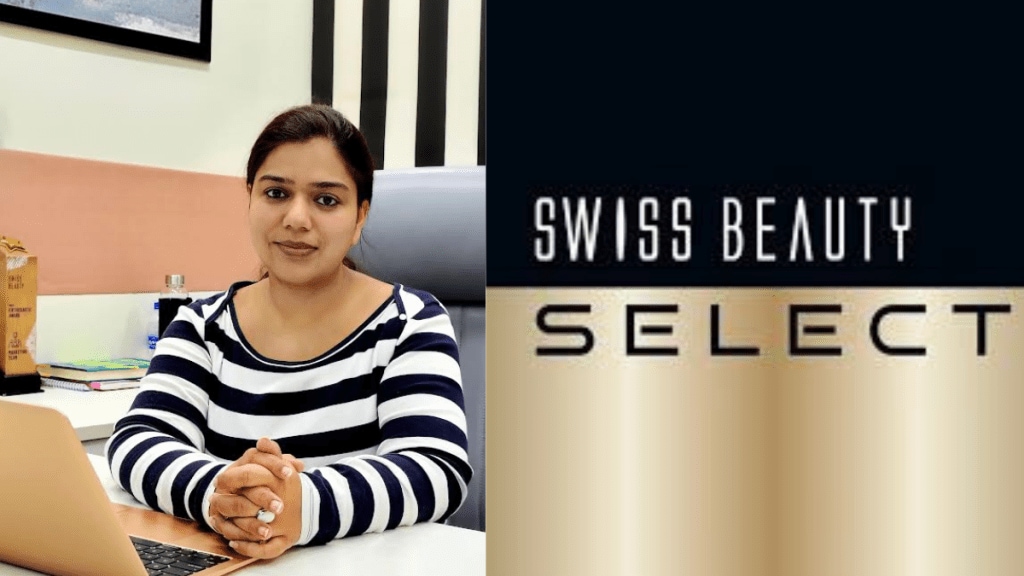The Indian beauty and cosmetics industry is experiencing a transformative phase characterised by an increasing demand for affordable products that maintain high quality. With rising disposable incomes and greater awareness of global beauty trends, consumers are becoming discerning shoppers who prioritise value and functionality over brand loyalty. Swiss Beauty, operational for 11 years, has adapted to this changing landscape by launching Swiss Beauty Select, a line aimed at the mass-premium segment that offers products with skincare benefits. “When we launched Swiss Beauty, our aim was to provide Indian consumers with high-quality products. Over the years, we’ve remained focused on that,” Vidushi Goyal, CMO, Swiss Beauty, told BrandWagon Online. The statement reflects the brand’s attempt to understand and respond to evolving consumer preferences. As Goyal noted, today’s consumers are not just seeking affordable cosmetics; they are looking for products that enhance their appearance while offering skincare benefits.
The Swiss Beauty Select line is intended to address this shift. “The products are differentiated by their quality-oriented, performance-driven formulations, many of which are infused with skincare properties,” Goyal stated. This strategy positions Swiss Beauty Select within a growing segment of consumers who prefer multifunctional products that provide added value. The tagline, ‘My Beauty. I Select,’ aims to emphasise the notion of consumer choice, catering to individuals who wish to express different facets of their identities through their beauty products.
Market dynamics and competitive landscape
The mass premium segment is becoming increasingly crowded as more brands vie for consumer attention. The rising trend of premiumisation—where consumers opt for higher-quality products even within affordable ranges—creates both opportunities and challenges. Swiss Beauty Select’s pricing strategy, which offers products at prices ranging from Rs 499 to Rs 850, places it in direct competition with other established and emerging brands in the mass premium space, including Maybelline, L’Oreal, and Colorbar.
While Swiss Beauty Select’s products are priced about 50-60% higher than its regular offerings of Swiss Beauty, the company still aims to provide competitive value compared to other brands. This pricing model reflects a broader market trend where consumers are willing to invest in slightly more expensive products if they believe these products deliver better quality and performance. Goyal remarked that the launch of Swiss Beauty Select aims to engage a demographic that desires upgraded beauty choices while remaining within the Swiss Beauty brand.
However, competition in the mass premium market is fierce, with brands employing various strategies to capture consumer interest. Established players benefit from brand recognition and customer loyalty, which may pose challenges for newer entrants or rebranding efforts like Swiss Beauty Select.
Distribution strategies: A dual approach
Swiss Beauty’s distribution strategy reflects an understanding of the need for both online and offline channels. Currently, Swiss Beauty Select is available on its website and on Nykaa, with plans for a broader rollout across multiple e-commerce platforms. Goyal indicated that offline sales remain crucial, stating, “Over the last two years, online sales have become an important channel for us, contributing around 40-45%, while offline sales contribute 55-60%.”
The brand’s established retail infrastructure, with a reach of 15,000 to 20,000 outlets across India, allows it to maintain a presence in traditional retail spaces while adapting to the growing online marketplace. This dual-channel approach is essential, as it caters to the varied shopping preferences of consumers who may prefer the tactile experience of purchasing beauty products in physical stores.
Swiss Beauty Select’s marketing strategy is heavily focused on digital channels, reflecting a broader trend in the beauty industry where brands increasingly engage consumers through social media. Goyal noted the importance of influencer partnerships, stating, “Digital media has become highly penetrated, so we focus on digital platforms to reach the mass population.” This strategy not only amplifies brand visibility but also taps into the aspirational nature of the beauty segment, where influencers play a crucial role in shaping consumer perceptions.
However, the reliance on influencers presents both advantages and potential drawbacks. While influencers can enhance brand visibility and authenticity, the efficacy of influencer marketing is contingent upon the ability to form genuine connections with audiences. As competition intensifies, brands must also navigate issues of saturation in influencer partnerships, where consumers may become desensitised to promotions and advertisements.
As Swiss Beauty Select positions itself in the mass premium category, it faces the challenge of differentiating its products from both low-cost competitors and established premium brands. The market is becoming increasingly competitive, with new entrants frequently emerging to capture the attention of price-conscious consumers. While Goyal emphasised the brand’s experience and understanding of the beauty ecosystem in India, the question remains whether this will be enough to sustain growth against formidable competitors.
Additionally, while Swiss Beauty has traditionally catered to a demographic primarily within the NCCS (National Classification of Socio-Economic Categories) D and C segments, it aims to attract NCCS A consumers with Swiss Beauty Select. This strategic shift may be complicated by the need to maintain brand loyalty among its existing consumer base while attracting higher-income consumers.
Swiss Beauty Select’s entry into the mass premium market reflects an astute understanding of the changing dynamics within the Indian beauty and cosmetics landscape. The brand’s focus on high-quality, multifunctional products at accessible price points positions it to engage a growing segment of informed consumers. However, the competitive landscape remains a significant challenge, with established brands leveraging their market presence and consumer loyalty.

